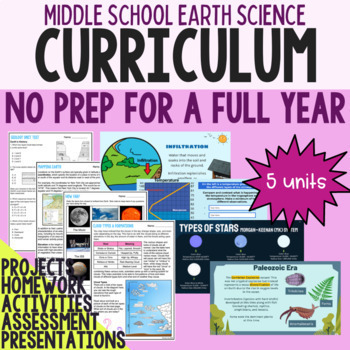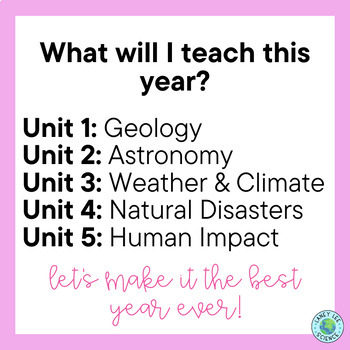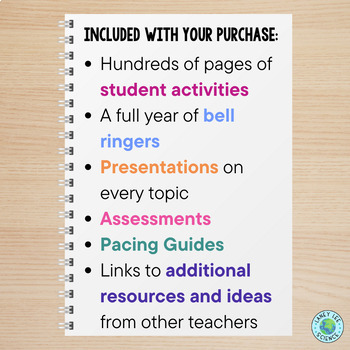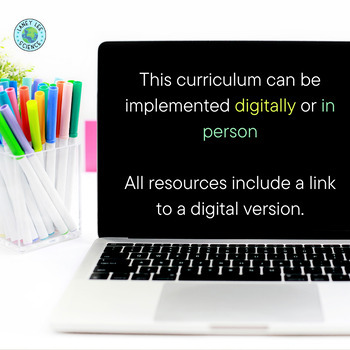Middle School Earth Science Curriculum - FULL YEAR
- Zip
- Easel Activity
- Easel Assessment

What educators are saying
Products in this Bundle (153)
showing 1-5 of 153 products
Description
Is lesson planning just too much on top of teaching on top of grading on top of classroom management on top of *ahem* living your life? Get all the guidance you need to teach a full year earth science course either in person, hybrid, or virtual with my all inclusive curriculum bundle!
This curriculum will save you time, engage your students, and wow your administrators!
Included Units:
Each unit contains:
- Pacing
- Google Slides Presentations
- Worksheets in both print and digital formats
- Assessment in both print and digital formats (Note, some assessments are still being added. These will be ready for the 2023-2024 school year!)
- Projects
- Links to tons of additional ideas from real teachers
Bell ringers also included:
- 46 Earth Science Phenomena Bell Ringers
- 43 Data Analysis Bell Ringers
- 40 Making Sense of Models Bell Ringers
- 41 Metacognition/Reflection Bell Ringers
- 112 Scientific Prefixes and Suffixes Bell Ringers
- 40 Famous Scientists Bell Ringers
More Helpful Resources included:
- Classroom Management Handbook
- Early Finishers Choice Board - Science
- Early Finishers Choice Board - General
Who is this resource for?
This curriculum is for new teachers, long term subs, homeschoolers, or anyone who wants to press the easy button on life!
This resource is best for educators in schools with access to internet and it uses Google apps for al digital components (Google Slides, Google Docs, Google Forms).
What's Included?
Most of the resources in this curriculum will be downloaded as a PDF file in color. If a digital file is connected to that resource, as it is in most cases, you will find the link in a large font on page 2 of the PDF. For resources that are printer friendly, the remaining pages of the PDF can be printed and copied. All relevant resources include an answer key at the end of the file.
I do not use zip files, instead I package my resources in PDFs as a single document from start to finish. Make sure to scroll through the entire resource if you’re looking for an answer key or alternate version!
Please take a look at the individual product and bundle preview files to see more of the resources included in this bundle.
How do I teach this curriculum?
Grab the free curriculum pacing guide that corresponds to this unit by downloading it here in PDF format. This pacing guide includes:
- Unit pacing
- Weekly suggested resources
- Essential Questions
- Key Takeaways
- Suggestions for additional resources/phenomena
- Possible extensions
What if I'm not sure?
Feel free to dip just a toe in first by trying one of my complete units before buying the full year curriculum!
All of my unit guides are free, so you can download those at any time to get an idea of pacing and to learn more about the included resources.
How will I know what’s new?
Stay up to date with updates to this curriculum by signing up here. This email list is only for users of this curriculum and will always be spam free.
For questions and support:
Email me at laneyleeteaches@gmail.com! I'm always quick to respond and help in any way I can.
My Other Full Year Curriculums:
To stay updated on sales and new products, please follow my store:
Connect and chat with me!





